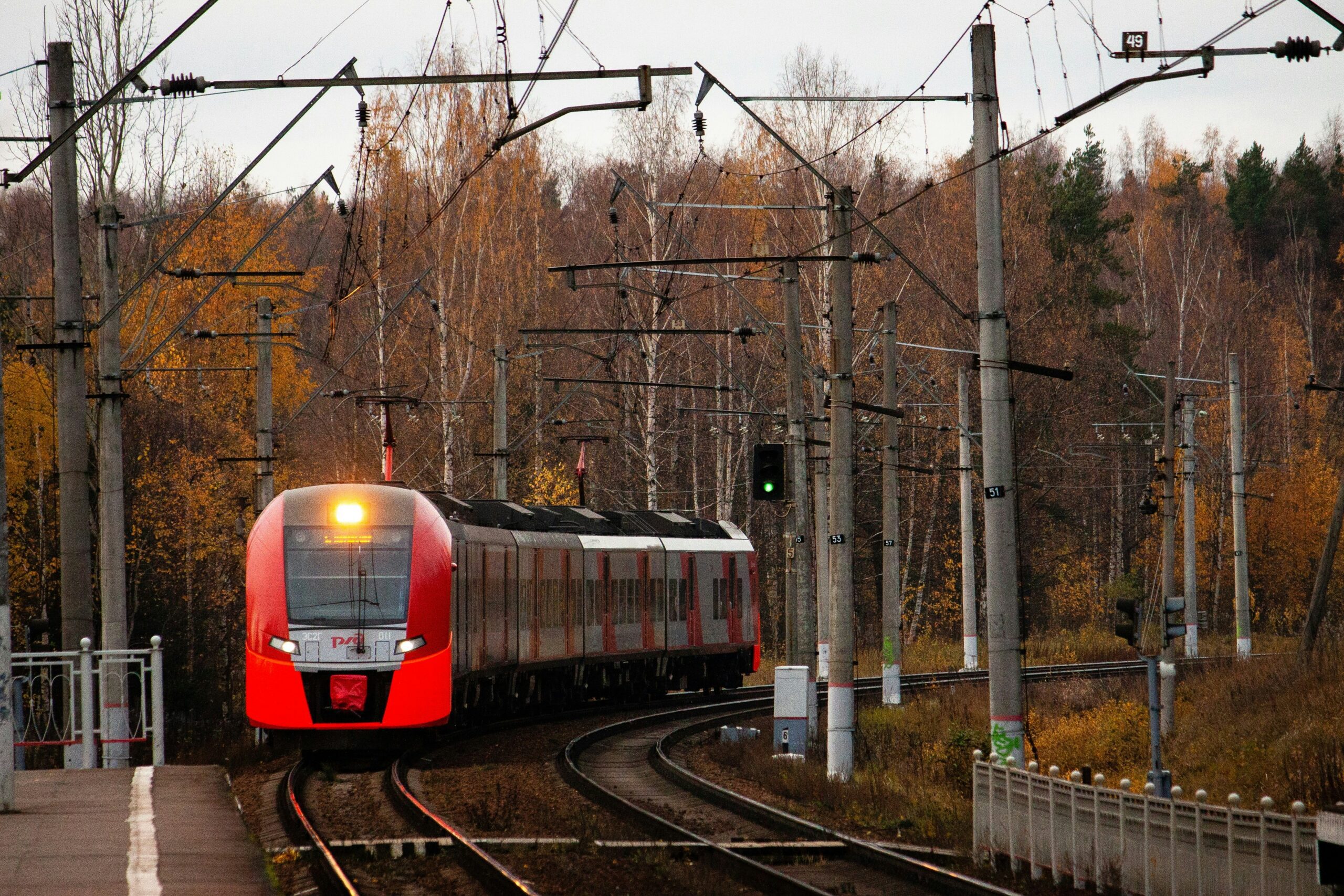(Bloomberg) —
Once hailed as an innovative urban mobility solution, these days microtransit sometimes feels more like a punching bag. Critics often decry the concept as too expensive or too difficult to scale. These naysayers also claim that microtransit — which typically consists of a publicly offered on-demand flexible route service in vehicles smaller than a bus — will eventually need to look more like fixed-route transit or limit trips. Even when transportation pundits concede that microtransit makes sense in certain parts of some cities, they argue that those are sprawling places where transit shouldn’t be heavily subsidized anyway.
These arguments aren’t new. Many seem to be constructed to take down microtransit rather than assist transit agencies in figuring out solutions to boost ridership numbers that have been falling for decades on a per capita basis. As transit agencies across the US work hard to recover from the pandemic, a more nuanced perspective may be helpful. In fact, these criticisms raise important questions for public transportation with implications beyond microtransit alone.
Why Not Both?
As part of the innovation team at Los Angeles Metro, we participated in developing the agency’s recent microtransit pilot programs, including Mobility on Demand and Metro Micro, and now we work with transit agencies around the country that are thinking strategically about adding forms of on-demand service. We are advocates for the idea that microtransit can help agencies adapt to the new travel patterns of the post-pandemic era.
Many in the industry perceive fixed-route bus and microtransit as two distinct modes to be compared to one another. A binary choice is always offered: An agency can spend their limited funds on one or the other. Fixed-route bus is presented as the more cost-effective option, and microtransit is characterized as the splashy fool’s gold that will wind up draining agency coffers or becoming fixed-route service anyway.
This distinction risks throwing the baby out with the bathwater. Microtransit technology is still relatively new, and the innovation it presents is the smartphone GPS technology and associated algorithms that have revolutionized many other forms of transportation. While ride-hailing services and micromobility also face financial challenges, they have dramatically improved mobility by connecting users with vehicles dynamically — and far more efficiently — than was previously possible. The fact that a new technology that offers significant benefits to users has struggled with financial viability is not a valid reason to dismiss or abandon that technology. It is a good motivator to figure out where and how it can work better.
Some of where the technology may work best is on buses and in transit customers’ hands. Operators of fixed-route buses should have the same real-time information at their disposal as microtransit and virtually everyone else on the road. If you get in a vehicle without GPS and real-time traffic information, do you not get a sense of unease due to the uncertainty? And yet, most buses do not have this technology; many operators still rely on analog methods such as memorizing routes and radio dispatch. Better technology in buses could provide traffic updates, give real-time information about customer demand, and potentially suggest route diversions or demand-responsive pickups when helpful.
Similarly, the ability for customers to see their vehicle approach in real time, know who their driver is, pay through their phone, and be able to provide immediate feedback on the quality of the trip is an undeniable improvement to the transit customer experience.
Additionally, microtransit tends to use smaller vehicles like vans instead of standard buses. Smaller vehicles may make sense in places with less demand, whether they are demand-responsive or not. Customers often prefer the experience of riding in vans or shuttle buses, as they can be more comfortable and feel safer than full-sized buses. They’re also easier to drive than a 40-foot bus — which is significant given the challenges the industry has faced with driver recruitment and retention.
Proclaiming that microtransit doesn’t work or shouldn’t be used is unhelpful. It would be more productive to help figure out how to make these tools work best for transit agencies by encouraging testing, iterating and trying again. We should be asking: Where can microtransit be incorporated, where do we need more bus service, and where is it some mix of both? Over time, it is likely that the distinctions between microtransit and fixed-route services will blur — and that will be a net positive for transit customers.
Microtransit Can Make Traditional Buses Better
Standard fixed-route buses can be a very effective means of public transportation, and they’re a great way to carry large numbers of passengers through dense environments. But in practice, they’ve been losing riders in the US over the last 50 years. As soon as most Americans can afford to buy a car and opt out of transit, for which fixed-route buses are the standard in most cities, they do so. This tells us that traditional bus service as currently being delivered is not working effectively enough to attract customers.
Improvements like well-enforced bus lanes, more frequent service and real-time information for riders can help reverse that trend. But why exclude dynamic routing from that list? Microtransit technology can be a way to make service improvements that are often more feasible than many of these other options. Railing against microtransit means ignoring another tool that has proven to be popular with customers.
It seems far more likely that the future of transportation in cities will include an array of options that give people more choices about how they travel. To provide substantial benefits and attract new customers, the transit industry needs to move away from the traditional focus exclusively on bus and rail and into managing a diverse set of modes. Many agencies are already doing this, such as LA Metro, Oregon’s Lane Transit District, and New York City’s MTA. Microtransit technology seems like an excellent tool to have available for this transformation.
There’s a Much Larger Transportation Subsidy
The biggest concern that critics of microtransit seem to have is with cost. They argue that microtransit cannot scale because it requires large subsidies, and only becomes more expensive as more people ride. Admittedly, microtransit has so far proven to be more expensive on a per-person basis than traditional transit. Even some of the lowest-performing bus routes in cities have lower subsidies per person than microtransit. This leads to concerns that microtransit is a waste of transit dollars that are already insufficient and could be better spent on buses.
There are two problems with this line of thinking. The first is that it implies that public transit users don’t deserve better service and instead should get only what is most efficient financially. Microtransit provides a superior customer experience compared to traditional buses, but it costs more. Saying it isn’t worth the extra cost to provide a better service suggests that transit riders don’t matter that much. They are entitled to improvements, but only the ones that are less expensive (and less of an improvement). This is a classic case of “we can’t provide better service because too many people will use it.” Only in the transit industry, where every additional customer increases costs, do we suffer from such thinking.
Transit users tend to be among the poorest members of our communities. It is true that in the real world there must be some cost constraints. But there are far greater examples of government waste and corporate welfare in transportation: Think of the billions spent on expanding highways, bailing out airlines or providing subsidies for EV buyers.
This leads to the second problem with this kind of thinking, which is that it assumes a fixed budget for public transit, and therefore any investment in microtransit takes away from buses. But consider the full costs of our society’s support for private cars and trucks, which pay nowhere near the cost of the roadway damage, pollution, deaths, injuries, social isolation and congestion that they cause.
Rather than eat our own lunch, would it not be more productive to go after these automotive subsidies? Transit advocates need to band together to push for congestion pricing, fuel taxes, higher parking fees, fines for bus stop and bus lane violators, elimination of parking minimums and denser land use and zoning policies. Fighting amongst ourselves about which form of public transit is most cost-effective implies that the allocation of who pays and who benefits is already correct, when it clearly is not.
The greatest inequity in transportation is not that transit agencies are providing high-quality microtransit services with money that could go toward buses. It is that, as a collective society, we are subsidizing drivers — including the wealthiest ones — at the expense of low-income transit riders and other people who do not drive. Instead of picking on microtransit, let’s work together to get the funds and policies in place to create a more equitable transportation system.
Joshua Schank is a managing principal at InfraStrategies, a national consulting firm in transportation, as well as a senior fellow at the UCLA Institute for Transportation Studies and a research associate at the Mineta Transportation Institute at San José State University.
Emma Huang is a senior consultant at InfraStrategies, focused on strategic planning and policy for transit agencies nationally.
© 2024 Bloomberg L.P.





